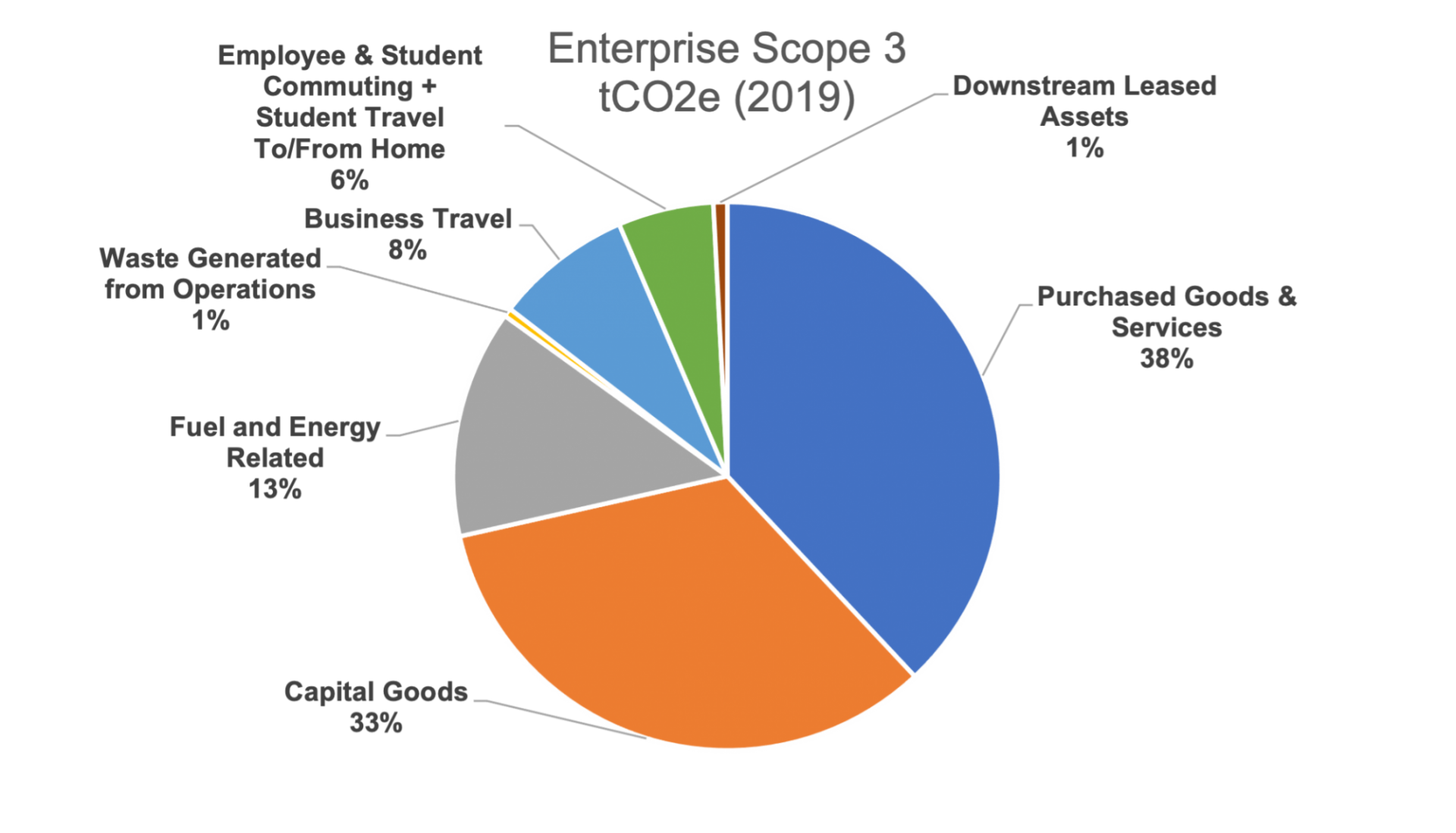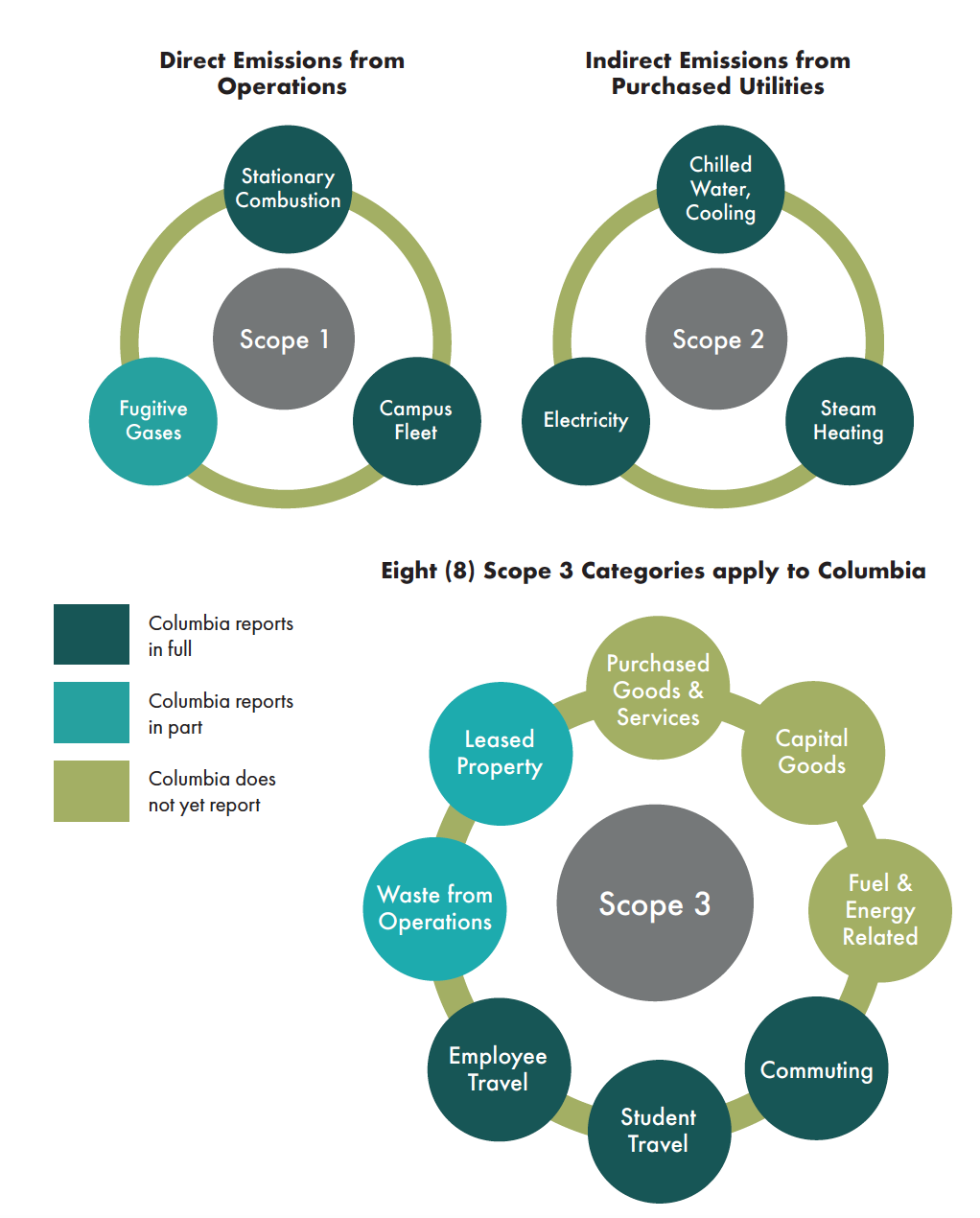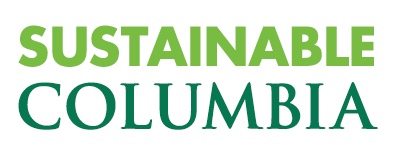Columbia's Progress Toward Quantifying Scope 3 Emissions
Columbia has committed to quantifying and reducing its Scope 3 emissions. Scope 3 emissions are all indirect emissions not included in Scope 2, and that arise from upstream and downstream activities in Columbia’s value chain. Examples of Scope 3 emissions include purchased goods and services, commuting, and waste from operations.
Plan 2030 sets a goal for the University to complete at least a screening level inventory of all types of Scope 3 emissions and to set targets for all material sources of Scope 3 emissions that are in line with the science-based concepts and targets described above for Scope 1 and Scope 2 targets. While Scope 3 emissions are more difficult to measure than other emission types, they make up approximately 75% of total University emissions.

The graphic above shows the results of the initial screening level inventory. To arrive here the Office of Sustainability worked with consultants at Energy Strategies and applied the spend based method as approved by the Greenhouse Gas Protocol. This method applied EPA emissions factors to 2019 spend data which enabled the University to quantify emissions where specific lifecycle data is not available.
The University has already calculated the Scope 3 emissions categories of commuting and business travel, and has completed portions of others like waste and downstream leased property. The next steps in 2023-2024 will be to prioritize the most impactful areas, such as contracts and embodied carbon for example, and then engage with the appropriate University stakeholders from Procurement and University Facilities and Operations, to the individual schools and beyond, to build action plans to reduce emissions in these categories.

